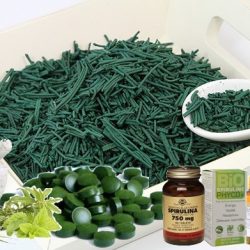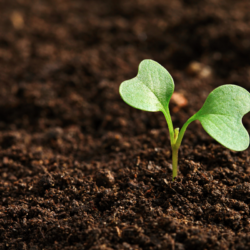The word alkaloid is a generic term to designate more or less complex compounds of plant origin, the main characteristics of which are the presence of nitrogen in the molecule and a more or less pronounced alkalinity. At low doses, they have physiological and pharmaceutical properties, but exhibit high toxicity at high doses. Among the most famous alkaloids are poppy extracts: codeine, morphine (discovered in 1805 in opium). Today we know more than a thousand, including strychnine, quinine, atropine, colchicine, all of plant origin.
The science of poisons
Pharmacology is inseparable from toxicology. Toxicology is the science of poisons; it can be summed up in one sentence: “The important thing is the dose! ”
When using active substances, one must keep in mind this precept of Theophraste von Hohenheim, known as Paracelsus (1493-1541): “If you want to explain precisely the action of each poison, then you must ask what is not poison? All substances are poisonous and none are harmless. It’s the dose that makes a substance nontoxic. ”
Any substance would therefore be potentially toxic, and this toxicity would be related to the dose administered. The veracity of this reasoning, however, depends on the dose reaching a given organ, that is to say its toxicokinetic (fate of the substance in the body) and toxicodynamic (action on its target) profile.
Tropanic alkaloids
Solanaceae officinal :
This group is characterized by the presence of alkaloids all having parasympatholytic properties causing in particular mydriasis. Their toxicity has long been known, and all organs contain alkaloids. The Solanaceae constitute an important botanical family which includes, on the one hand, poisonous plants among which we must mention the Belladonna, the Datura and the Black henbane.
⇒ Atropine and hyoscyamine :
The hyoscyamine contained in belladonna, datura and black henbane is more active than atropine, but these two alkaloids have the same pharmacological properties:
- Action on the central nervous system :
They cause, in high doses, excitement, which can result in a true atropine delirium. This action is weak at the usual doses, but some individuals are particularly sensitive to the central effects of atropine, in particular young children, animals and the elderly.
- Action on the autonomic nervous system :
They have a parasympatholytic action in therapeutic doses, they are acetylcholine antagonists. Atropine inhibits muscarinic receptors located in the peripheral organs innervated by the postganglionic fibers of the parasympathetic, which causes mydriasis, bronchodilation, vasoconstriction, increased heart rate, slowing of peristalsis, drying up of all secretions (salivary, gastric, sweat, lacrimal, bronchial), increased intra-vesical pressure and antispasmodic action.
The risks of side effects are numerous: tachycardia, constipation, dry mouth, excitement, nervousness, insomnia …
⇒ Scopolamine :
In therapeutic doses it is a sedative substance for the central nervous system and antiparkinsonian; it is also a parasympatholytic substance (weaker than atropine) and an antispasmodic.
Son utilisation peut entraîner des effets secondaires comparables à ceux de l’atropine mais avec un risque de somnolence, ses contre-indications sont les mêmes. Elle entre dans la composition de spécialités à visée antalgique, en association avec d’autres principes actifs.
Quinolizidine alkaloids
The broomstick :
⇒ Sparteine :
Spartein is oxytocic and ganglioplegic. By isolating the heart from the influences of the autonomic nervous system, it has a tonicardiac action. It can be used during childbirth to improve uterine contractions. It is also used, for its regulatory and tonic action, in certain heart rhythm disorders, tachycardia of neurotonic origin and cardiac erethism. Scoparoside has diuretic properties used in herbal medicine.
Isoquinoleic alkaloids
Poppy :
Poppy contains several alkaloids such as morphine, codeine, noscapine and papaverine.
⇒ Morphine :
Poppy morphine acts at the level of the cerebral cortex and the pain center; at a low dose it is first of all an stimulant causing euphoria and a feeling of well-being, then at a higher dose it is a depressant leading to a reduction in nociceptive perceptions and therefore the abolition of pain. Secondarily there is drowsiness (analgesic and hypnotic actions).
Morphine depresses the bulbar respiratory center, it causes respiratory depression all the more important as the dose is high, which can go as far as apnea; it also depresses the center of the cough and therefore has an antitussive action. At the digestive level, it is a gastric stimulant, which can cause nausea and vomiting, and also a moderator of intestinal peristalsis (antidiarrhoeal action). At the cardiac level, a bradycardizing effect is observed with vasodilation and hypotension. It is finally a stupefying substance.
Used as a major analgesic in the treatment of “severe” pains resistant to any other therapy, the use of morphine requires careful monitoring of the patient given its properties at the respiratory and cardiac level in particular.
⇒Codeine :
It has the same properties as morphine, but less toxic. Antitussive of central action, they are used for the symptomatic treatment of non-productive coughs. Codeine should not be given to patients with respiratory failure, asthmatics and infants. The analgesic properties of codeine are used, usually in combination with a peripheral analgesic.
The use of codeine can cause drowsiness, nausea and constipation.
⇒ Noscapine :
This alkaloid is not very active on the central nervous system, it is a non-addictive cough sedative.
It is used in the treatment of non-productive coughs, often combined with other active ingredients. Like codeine, it is contraindicated in cases of respiratory failure or asthma.
⇒ Papaverine :
Neither analgesic nor narcotic, this alkaloid is a musculotropic spasmolytic which relaxes muscle fibers especially when they are in contracture. It acts mainly at the peripheral vascular level.
It is proposed as a peripheral and anti-ischemic vasodilator in the sequelae of vascular accidents or cranial trauma, in retinal disorders of vascular origin, in arteritis of the lower limbs, or even in peripheral arterial or venous circulatory disorders.
Tropolonic alkaloids
Colchicum :
⇒ Colchicine :
Colchicine is antimitotic, but too toxic to be used as an antitumor. It also has an anti-inflammatory action, which makes it the specific treatment for acute gout attacks. It acts only on the phenomena which maintain inflammation, but it has no effect on the metabolism of uric acid.
It is a poisonous substance at low doses, particularly effective if used at the onset of the first symptoms of the gout attack. The side effects, in particular the risk of diarrhea, however, require reducing the dosage.
Indole alkaloids
Rye Ergot :
⇒ Ergometrine :
This alkaloid has a predominant effect on the uterus, increasing the basal tone, frequency and contractions of the uterus by stimulating the adrenergic receptors of the myometrium. This activity is all the more marked if the uterus is pregnant. Uterine hypertension explains the antihemorrhagic effects of ergometrine.
In the form of methylergometrine, it is used as a uterine tonic in the prevention and treatment of uterine hemorrhages of known aetiology, in particular postpartum.
⇒ Ergotamine :
At low doses, it is strongly vasoconstrictor by stimulation of adrenergic receptors. There is a particularly marked vascular tonic reaction at the peripheral level.
In high doses, it is an antagonist action and therefore adrenolytic, but weak.
Ergotamine and its derivatives are mainly used as an anti-migraine medication, due to the vasoconstrictor properties. Ergotamine tartrate is specific for the treatment of migraine attacks and vasomotor headaches, provided it is administered as soon as possible when the warning signs appear. Dihydroergotamine is the basic treatment for migraine.
Tropical periwinkle :
It is above all adrenolytic: it is a peripheral vasodilator which increases muscle and cerebral blood flow. It is used in cerebrovascular pathology (psycho-behavioral disorders of senescence), sensory disorders (dizziness, tinnitus), cerebrovascular accidents, cranial traumas and their sequelae. A synergy is observed with the hydrogenated alkaloids of rye ergot with which it can be combined.
⇒ Vincristine and vinblastine :
These two alkaloids have antimitotic properties; by preventing the formation of the spindle, mitosis thus blocks in metaphase.
The Little Periwinkle :
⇒ Vincamine :
Spasmolytic with peripheral vasodilator properties, the effects of which are particularly favorable on cerebral irrigation and oxygenation, vincamine is proposed as an anti-ischemic agent in cerebrovascular disorders, in particular those linked to senescence. It is also used in the sequelae of head trauma, cochleo-vestibular disorders and retinal disorders of ischemic origin.
The vomit maker :
⇒Strychnine :
Strychnine, very toxic, is a stimulant of the central nervous system, at the medullary and bulbar level. In very low doses it is a nervous tonic and a digestion stimulant used as an antiasthenic. At higher doses, fatal convulsions are observed.
The vomit nut is still widely used in homeopathy.
Quinoleic alkaloids
The red cinchona :
⇒ Quinine :
The properties of quinine are multiple :
- It is a cellular toxicant acting in particular on protozoa and more particularly on Plasmodium, the agent responsible for malaria. It acts mainly on the asexual form of Plasmodium. It can be used as a preventive or curative. However, in high doses it is toxic and can cause many side effects.
- Quinine has an antipyretic action by acting on the thermoregulatory nerve centers; this action is particularly marked during malarial fevers.
- Its action on the cardiovascular system is explained by the toxicity of quinine. This action is weak at usual doses, but may cause side effects. Hypotension is then noted with the possibility of collapse by vasodilation.
The current actions are mainly the treatment of the pernicious attack of malaria and that of the cases of malaria resistant to other antimalarials.
⇒ Quinidine :
It is an antiarrhythmic substance capable of depressing myocardial functions: it decreases the excitability and conductivity of the myocardium. It is therefore a powerful cardiac sedative which can be used for the treatment of extra systoles or for preventing supraventricular tachycardias.
Quinidine also has antimalarial properties, but its effects on the heart do not allow it to be used in this indication. Its toxicity is greater than that of quinine and it can cause disorders characteristic of cinchonism.
Imidazole alkaloids
The Jaborandi :
⇒ Pilocarpine :
It has a parasympathomimetic action :
- In the eye, there is miosis and a decrease in intraocular pressure following contraction of the iris sphincter and ciliary muscle. It is generally used in the form of eye drops in the treatment of glaucoma.
- Pilocarpine, which can be used in the treatment of dry mouth, increases tear, salivary and gastrointestinal secretions.
Purine bases
Purine bases such as caffeine, theine (tea tree) or even theobromine (cocoa tree) are among the alkaloids. However, their biosynthetic origin is different and these compounds are therefore not part of the class of alkaloids despite certain analogies.
!!! WARNING !!! Outside of a medical setting, most of these substances can lead to death if misused with inappropriate dosages !!! Never use alkaloid plants for self-medication. These plants must be prescribed by a doctor under close medical supervision!
Sources :
- Bruneton J. Pharmacognosie, Phytochimie, Plantes médicinales. Ed. Tec et Doc 1997
- Morel J-M. Traité pratique de Phytothérapie. Ed. Grancher 2008
- R.R.Paris, H. Moyse. Matière médicale, Coll. Précis de pharmacie, Masson
- Pharmacopée Française 10e édition
- Roberts, M. F. Wink, and M. , Alkaloids -Biochemistry, Ecology, and Medicinal Applications, Book Reviews Phytochemistry 1999
- Tanot, in Le Beau (P.) et Janot, Traité de Pharmacie chimique, IV, Paris 1955-1956





